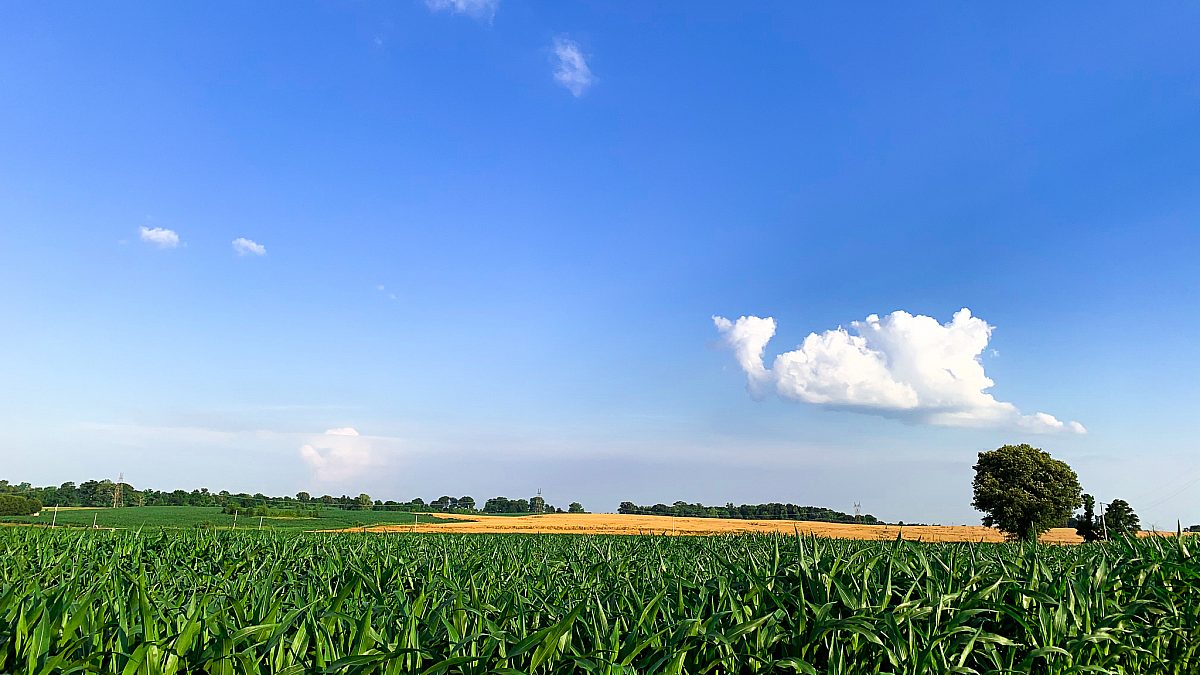Agriculture, Transportation Face Similar Challenges Across the Country
TOPICS
TransportationGuest Author
Special Contributor to FB.org

photo credit: AFBF Photo/Morgan Walker
Guest Author
Special Contributor to FB.org
By Richard Guebert Jr.
American farmers continue to see slimmer margins after three years of COVID-19 pandemic-induced shipping delays and supply chain disruptions. High fuel prices caused in part by the war in Ukraine have only squeezed margins tighter.
During a recent trip to Savannah, Georgia, several Illinois Farm Bureau member leaders toured shipping terminals in the third-busiest port in the country to learn more about major barriers affecting the transportation sector. We also visited with area farmers and talked about the challenges they’re facing.
The Georgia Ports Authority operates the country’s largest single-terminal container facility of its kind in Savannah. Merchandise containers from China and other parts of Asia travel through the port’s deep-water terminals, where shipments are distributed by rail and truck to the Southern, Midwest and Northeastern parts of the country.
It’s estimated that nearly 45% of the U.S. population can be served by rail from the Port of Savannah—but that requires area facilities to work at full capacity.
No one solution will work to solve the many obstacles American farmers face.
We met with GPA staff to tour the Garden City Terminal and Ocean Terminal to find out how a backlog of materials has impacted transportation coming and going from the port.
Like many American ports, truck driver and chassis (the base frame of a motor vehicle) shortages, along with general workforce and warehouse shortages, have stunted growth opportunities for the Savannah location.
To alleviate some of the mounting pressures on the transportation sector, GPA is investing $4.5 billion to increase port capacity by one-third. New warehouses are also being built within 30 miles of the shipping center to create a resting spot for materials waiting to be trucked to other locations.
Of the 10.7 million people who live in Georgia, nearly 60% live in the Atlanta metro area. To support urban communities, new warehouse developments continue to take farmland out of production.
Pete Waller, owner and operator of Ottawa Farms in Bloomingdale, Georgia, invites visitors to his agritourism operation to pick blueberries, strawberries and blackberries each year. He said his farm looks different today than it did when it started in 1870, largely because of surrounding development.
Waller has already sold some of his land for a warehouse and has committed to sell more for additional warehouses in the future. He owns one of two remaining farms in Chatham County, home to Savannah.
Just like in Georgia, we see an urban-rural divide here in Illinois.
While infrastructure investment is important, our organization also aims to protect landowner rights and the preservation of farmland for future generations. This trip offered an opportunity for Farm Bureau member leaders to see both sides of the issues surrounding ag trade in the U.S.
No one solution will work to solve the many obstacles American farmers face, but there is value in having these conversations with people across state lines.
Growth creates new challenges, but the hope is that a balanced approach can move the farming and transportation industries forward.
Richard Guebert Jr. is president of Illinois Farm Bureau. This column was originally published by Illinois FB and is republished with permission.